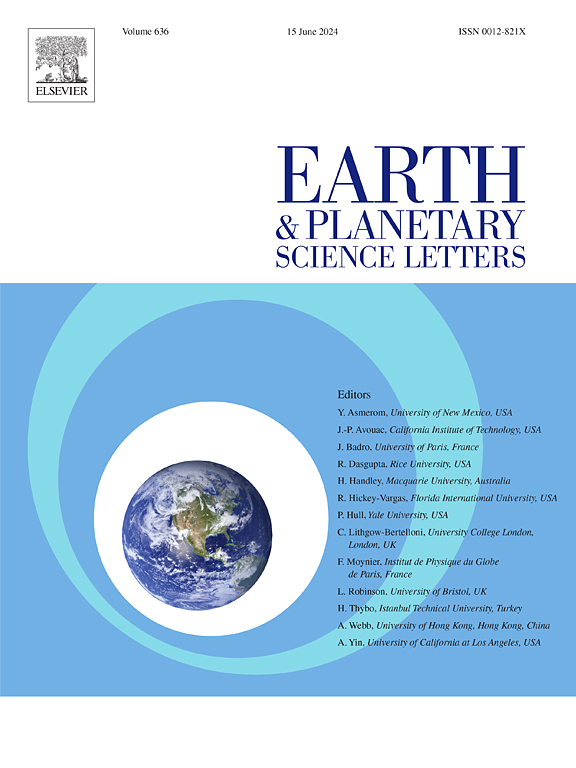Development of arc curvature by asymmetric migration: Evidence from Permian–Triassic granitoids in the New England Orogen (eastern Australia)
IF 4.8
1区 地球科学
Q1 GEOCHEMISTRY & GEOPHYSICS
引用次数: 0
Abstract
Magmatic arcs commonly display curved and segmented map-view geometry and their temporal evolution involves migration across strike and episodic magmatism. To investigate relationships between arc curvature and slab geometry in an evolving orogen, we studied the spatio-temporal evolution of a Permian–Triassic arc in eastern Australia. New and compiled U-Pb zircon dates reveal that arc magmatism was episodic, with peak activity at ∼252 Ma, followed by a ∼7 Myr magmatic lull. The onset of contractional deformation (Hunter-Bowen orogeny), at 269–252 Ma, was accompanied by landward arc migration, but the rates of arc advance varied along strike. This created a prominent curve in the arc. A subsequent phase of subduction rollback and/or slab steepening, at 240–235 Ma, was accompanied by trenchward arc migration and the development of a new non-curved arc. We suggest that arc curvature was likely the consequence of along-strike changes in the slab dip angle, with arc advance occurring in response to flattening of the subducting slab. The immobile portion of this arc coincides with an area where the underlying lithosphere is anomalously thick, indicating that arc migration was directly influenced by overriding-plate heterogeneities, whereby the presence of a thicker overriding lithosphere inhibited slab flattening. We conclude that interactions between slab geometry and overriding-plate thickness may control arc behaviour globally and may explain kinks and curvatures in other arc systems, such as in the Bolivian Orocline.
求助全文
约1分钟内获得全文
求助全文
来源期刊

Earth and Planetary Science Letters
地学-地球化学与地球物理
CiteScore
10.30
自引率
5.70%
发文量
475
审稿时长
2.8 months
期刊介绍:
Earth and Planetary Science Letters (EPSL) is a leading journal for researchers across the entire Earth and planetary sciences community. It publishes concise, exciting, high-impact articles ("Letters") of broad interest. Its focus is on physical and chemical processes, the evolution and general properties of the Earth and planets - from their deep interiors to their atmospheres. EPSL also includes a Frontiers section, featuring invited high-profile synthesis articles by leading experts on timely topics to bring cutting-edge research to the wider community.
 求助内容:
求助内容: 应助结果提醒方式:
应助结果提醒方式:


